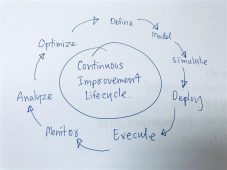Revolutionizing Food Safety Training: Breaking Out of the “Check-the-Box” Mentality
Transcribed from the Eye on Food Safety Podcast
In today’s complex food production landscape, traditional training approaches are falling short. A recent Global Food Safety Resource podcast featuring industry experts Raj Shah, of Registrar Corp., and Dr. Jennifer van de Ligt, of Food Edge Solutions, revealed critical insights into transforming food safety training from a mundane compliance exercise to a dynamic, culture-building strategy.
The Current Training Challenge
Food safety professionals have long struggled with training that feels more like a bureaucratic requirement than a meaningful learning experience.
As podcast host Jennifer Crandall noted, many organizations approach training as a simple checkbox activity, particularly for frontline workers. The experts highlighted several key challenges:
- Training often lacks strategic depth
- Programs rarely consider diverse workforce needs
- Engagement and comprehension are frequently overlooked
- Management often fails to understand the broader business implications
By embracing strategic, engaging, and culturally sensitive approaches, organizations can transform training from a mandatory requirement to a powerful tool for building a robust food safety culture.
A Holistic Approach to Training
The need for a comprehensive training strategy was emphasized by van de Ligt.
“What we’re finding when we train our food safety professionals is that it requires a holistic mindset across the organization,” she said.
Shah underscored the importance of language accessibility.
“Imagine you are in the US or Canada, and you move to Brazil, and you’re now on the frontline doing duties, and they provided training in Portuguese. How much of it would you retain?” he asked.
Shah also stressed the importance of brevity and engagement and recommended the A-B-C-D framework for those developing internal training.
- Audience: Who are you presenting to?
- Behavior: What behavior do you want to change?
- Content: What information do you need to share?
- Delivery: How will you present the information?
“Less is more. All of us… know all the details at the 10th level, but the workers and folks being trained will have information go right over their head,” Shah said.
Van de Ligt highlighted the need to vary training by organizational level.
“We need to provide training opportunities at different levels and different tiers to make sure the right message is hitting the right audience,” she said.
The conversation also highlighted unique challenges with seasonal and contract workers.
“Contract workers and seasonal workers are, frankly, even more important to train than your regular staff, mainly because they are in and out,” Shah said.
Emerging technologies are also making training more accessible. Shah mentioned AI and synthetic voice generation enabling course translations in multiple languages, making training more inclusive and effective.
The Bigger Picture: Culture Over Compliance
Ultimately, the experts agreed that practical training transcends mere compliance.
“It’s not about training, it’s about the culture that we’re building around food safety,” Shah said.
Food safety training is evolving. By embracing strategic, engaging, and culturally sensitive approaches, organizations can transform training from a mandatory requirement to a powerful tool for building a robust food safety culture.
Dr. Van de Ligt’s parting wisdom encapsulates the mission: “Food safety and food defense is not a competitive advantage for any company. We’re all in it together, because I might be eating your food this evening when I have my dinner, and I want to know that it was made safe in your facility.”
This conversation, and all the previous episodes of Eye on Food Safety with GFSR, are available for listening on Apple Podcasts and Spotify, and video recordings of the live event can be viewed on demand with a Premium Subscription from GFSR.

-
 FeaturedRisk management
The Cost of a Breach: What a Cyberattack Could Mean for Food Safety Recalls
FeaturedRisk management
The Cost of a Breach: What a Cyberattack Could Mean for Food Safety Recalls
-
 FeaturedRisk management
Securing the Food Chain: How ISO/IEC 27001 Strengthens Cybersecurity
FeaturedRisk management
Securing the Food Chain: How ISO/IEC 27001 Strengthens Cybersecurity
-
 FeaturedRisk management
Revolutionizing Food Safety Training: Breaking Out of the “Check-the-Box” Mentality
FeaturedRisk management
Revolutionizing Food Safety Training: Breaking Out of the “Check-the-Box” Mentality
-
 GFSI Standards
GFSI 2025: Building Trust, Tech-Forward Solutions, and Global Unity in Food Safety
GFSI Standards
GFSI 2025: Building Trust, Tech-Forward Solutions, and Global Unity in Food Safety
-
 FeaturedFood Safety
Integrated Pest Management: Strategies to Protect Your Brand’s Reputation
FeaturedFood Safety
Integrated Pest Management: Strategies to Protect Your Brand’s Reputation
-
 FeaturedFood Safety Culture & Training
No Open Door Policy: Challenges That Impact Pest Control in Food Processing Plants
FeaturedFood Safety Culture & Training
No Open Door Policy: Challenges That Impact Pest Control in Food Processing Plants




